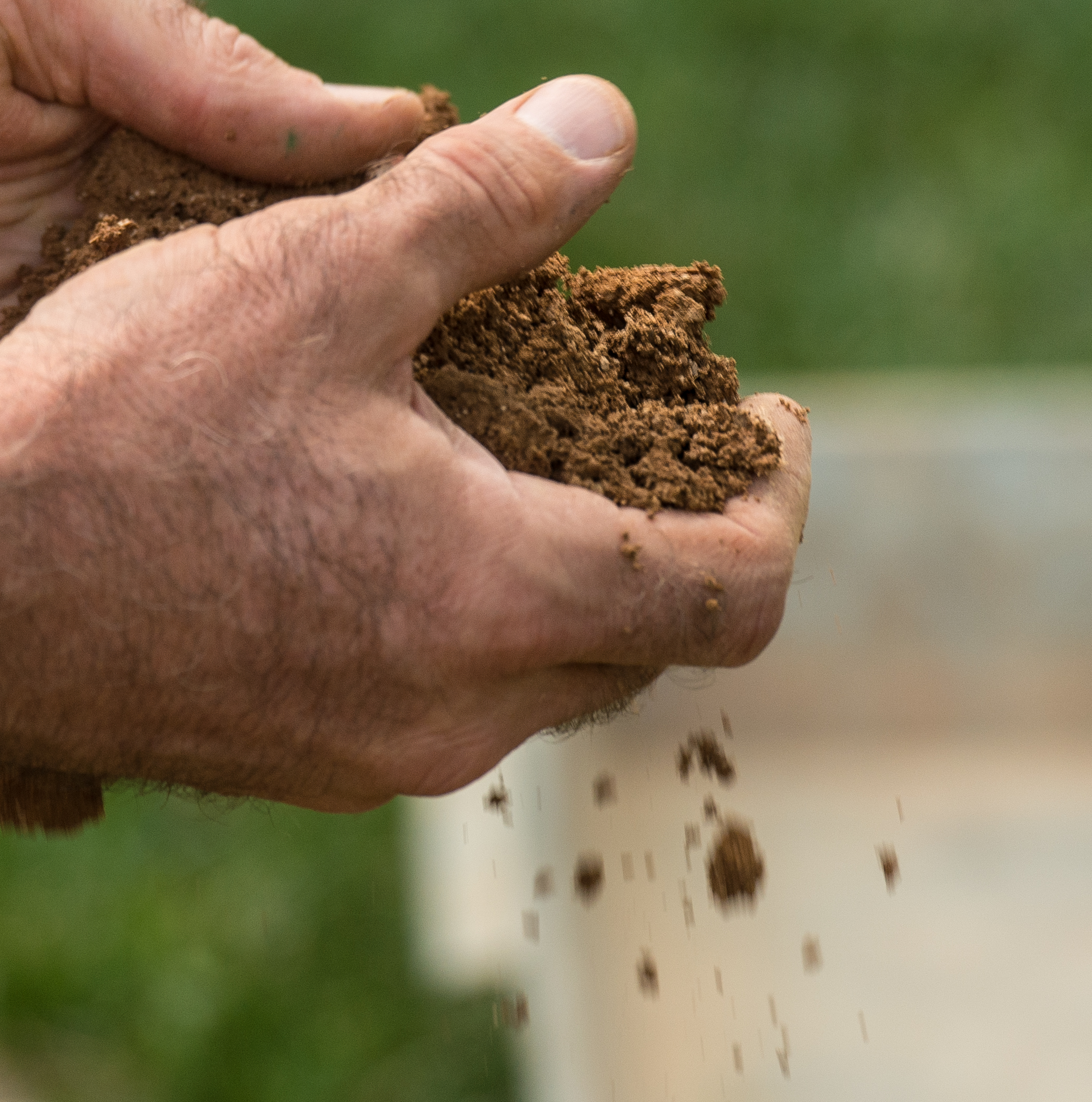20 minutes after a rain simulator applied 2 inches of water on this highly tilled soil, from a plot that does not use a cover crop, hands remain dry as the soil is crushed by hand. The soil has no ability to hold moisture at the level of plant roots, after a short intense watering, as demonstrated, during the U.S. Department of Agriculture (USDA) Natural Resources Conservation Service soil health demonstration event “The Bundled Benefits of Soil Health” features a rain simulator that showers about two inches of water on five different soil surfaces, showing the pass through results in clear containers, on Thursday, September 18, 2014 in the People’s Garden, on the grounds of the USDA headquarters, in Washington, D.C. The trays contain soil form local farms and represent: 1. Cropland that is regularly tilled, using mechanical equipment and has no cover crop. 2. Cropland that is not tilled and uses cover crops to add organic material and manage the soil health. 3. The empty pan represents paved over soil. 4. Grassland that has been over grazed and compacted. 5. Grassland that uses managed grazing, allowing the soil and cover crop to recover. The rain simulator catches the water runoff, in clear containers to show the various levels of water that drained out of the soil and away from the root system. Results range from pavement that sheds all of the water; to grassland that uses managed grazing and retains all of the water. After the demonstration, tilled soil was dry and dusty minutes after the water was turned off. No-till soil with cover crop, shows moisture throughout and live worms still alive and burrowed in the soil that maintained its structural integrity until pulled apart. This demonstration shows some of the results of best management practices currently being used across the country. Followed this are interactive discussions about the benefits of voluntary, incentive based conservation programs to both agriculture and the environment. It also highlig
